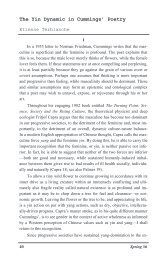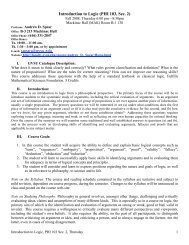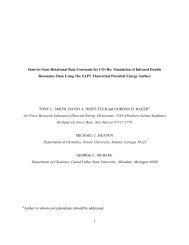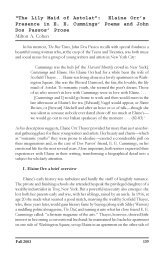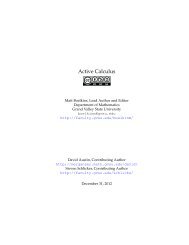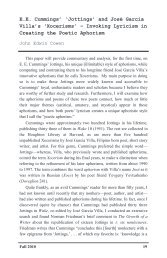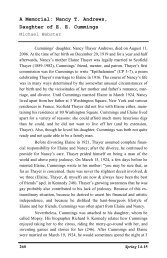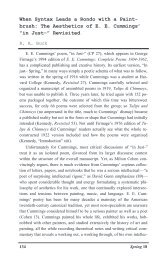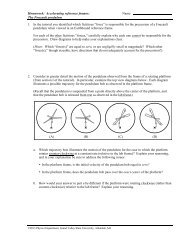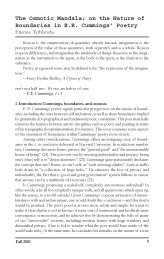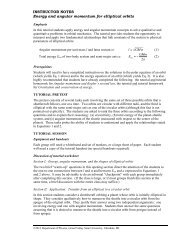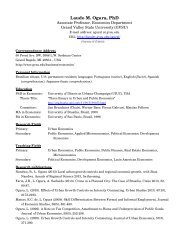Active Calculus - Gvsu - Grand Valley State University
Active Calculus - Gvsu - Grand Valley State University
Active Calculus - Gvsu - Grand Valley State University
- No tags were found...
Create successful ePaper yourself
Turn your PDF publications into a flip-book with our unique Google optimized e-Paper software.
92 4.1. DETERMINING DISTANCE TRAVELED FROM VELOCITYActivity 4.2.A ball is tossed vertically in such a way that its velocity function is given by v(t) = 32 − 32t,where t is measured in seconds and v in feet per second. Assume that this function is valid for0 ≤ t ≤ 2.(a) For what values of t is the velocity of the ball positive? What does this tell you aboutthe motion of the ball on this interval of time values?(b) Find an antiderivative, s, of v that satisfies s(0) = 0.(c) Compute the value of s(1) − s( 1 2). What is the meaning of the value you find?(d) Using the graph of y = v(t) provided in Figure 4.3, find the exact area of the regionunder the velocity curve between t = 1 2and t = 1. What is the meaning of the valueyou find?(e) Answer the same questions as in (c) and (d) but instead using the interval [0, 1].(f) What is the value of s(2) − s(0)? What does this result tell you about the flight of theball? How is this value connected to the provided graph of y = v(t)? Explain.ft/sec2412-12v(t) = 32 − 32t1 2sec-24Figure 4.3: The graph of y = v(t).⊳




